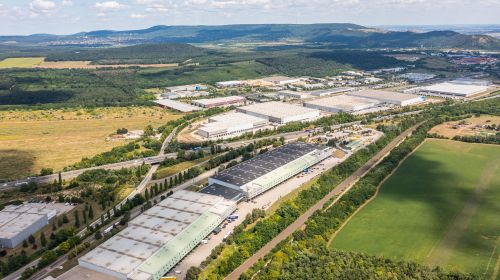An early spring corrective
Stock market reportIn February there was a changing of guard at the US Fed. In a break with the unwritten tradition, Janet Yellen was not appointed for a second, final term, but replaced by Jerome Powell, who it soon became clear is more of a hawk and a supporter of interest rate hikes. This is bad news for share investors. After his first few comments, in which he talked of the risk of an overheating economy, the expectation of interest rate hikes in 2018 and 2019 has grown. That former benefactor of the global exchanges – Donald Trump – also added fuel to the fire when he announced the introduction of tariffs on imports of aluminium and steel. China may now decide to reciprocate, triggering a trade war between the world’s largest economies. This, in turn, would reduce the value of the trade between countries (as the World Trade Organization has already warned), which is a concern for companies and investors around the world. The main economic indicators stopped improving in February, which means that the economy is still growing but more slowly. Yet more investor jitters were triggered by the election results in Italy and the large numbers of populist members elected to the new parliament. On the other hand, at the beginning of March we finally saw the formation of the new government in Germany. Angela Merkel will be staying on as chancellor at the head of a broad coalition governing the largest economy in the eurozone – and this has gone some way towards soothing worries on the trading floors of the Old Continent. The indices in Poland also reflected the mood on the global markets. Even the excellent GDP figures in Q4 couldn’t help. They showed the highest growth in ten years (5.1 pct per annum) and – more importantly – real investment shot up (by 13 pct), which was responsible for over half of the growth of the Polish economy towards the end of 2017. The positive economic climate could also be seen in the data for construction and production, which has been growing at a rate not seen for over a decade. In January it increased by 35 pct and in February by 31 pct. The construction industry was not badly affected by the cold weather because, according to economists, a substantial stream of EU funds is still flowing into it. Construction is now driving other sectors of the economy and so GDP growth in Q1 could still be around 5 pct. All this means that the the Polish economy is signalling strong rises for the rest of the spring.
However, the end of February and early March were marked by falls in the indices – except for one: WIG-BUD, an index that had not gained at all in previous months and had actually lost more than 20 pct since the autumn. Will the growth inproduction start to help construction companies? Investors seem to be thinking back ten years to around the time of Euro 2012, when the boom could be seen in an increase in the prices of materials and the very high prices being demanded by public institutions, which caused many problems for construction firms. These days infrastructural investment is being driven by the EU funds funnelled to the state agencies responsible for roads and railways, but the price is still important and another factor that is dragging the sector down is the labour market – constructors are struggling with both staff shortages and rising labour costs. The employee’s market in Poland is leading construction companies more often than not to look for workers further east. Budimex, the industry’s stock market leader, employed around 750 people in 2017; this year the company aims to have a workforce of 1,000 – and is looking to recruit them from Belarus and Ukraine. And if the stock exchange leader is cautious about the market’s prospects, it’s going to be difficult to expect investors to be excessively confident about the sector, despite the huge EU funds coming its way. Budimex currently has a record order portfolio (over PLN 10 bln) and in 2017 boasted the highest profit in its history (PLN 464 mln) with revenue of more than PLN 6 bln. Due to these results, Budimex has been notable for the rise in its share value of more than 8 pct over a six-week period as the stock market plummetted. Mirbud also stood out with its 13 pct share price increase. But it was its subsidiary JHM Development that provided the results to burnish the image of its owner with a rise in revenue of 75 pct and also in its profit. These results are not so surprising, since Q4 as well as the whole of 2017 was a very successful period for developers. They are also generating dividends – such as in the case of Atal, which wants to pay almost PLN 140 mln to its shareholders from a profit of PLN 171 mln. However, it is not only profits and dividends that investors are interested in. Polnord, which was once controlled by Ryszard Krauze is today managed by financial intsitutions with rumours now being fuelled by Murapol’s stake of almost 10 pct in the company, as well as by recent major ownership changes among developers (i.e. LC Corp and the acquisition of Robyg by Goldman Sachs).
Prague resistant to turbulence
The worldwide correction was not one that the Budapest Stock Exchange index managed to escape. The BUX lost 2.6 pct, falling to a level of 38,000 points, after reaching its record height of 41,000 points in January. The PX50 index in Prague actually did manage to avoid the global fall, gaining a little under 1 pct. The reason for this could be the low liquidity level of the Czech stock exchange rather than the attractiveness of the companies listed on it.





















































